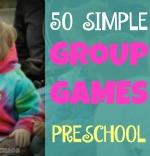Life Lessons for Homeschooling
Back to homeschooling dealing with brain drain. By now, most kids are back in school full-time. As homeschoolers, we officially started August 12 with Connections Academy, since there were no scheduled live lessons we eased back into it. Life lessons for homeschooling quickly ensued. Enjoy!
Brick and mortar schools have late start Monday, so why can’t we? We started late (10:00) did a lesson, took a break, did another lesson, ate lunch, did another lesson, went swimming (hey, it counts as P.E), and then called it a day. Although, it sounds easy- it wasn’t! I’m great at giving advice, remember this post on summer brain drain? Well, turns out, I didn’t follow my own advice. How much brain power can one lose in a few weeks, right?
W-R-O-N-G!
 |
| School is back in session. |
Jake is doing great, on task, a little hurried so he can get back to his video games, but overall excellent. He had a perfect spelling test, near perfect Math homework, and he was all smiles and ready to roll. He hates school, but it comes easy.
Mayhem. Mayhem. Mayhem. That’s not her given name, but that’s what we call her, Mandy Mayhem. We woke up, brushed our teeth, freed the chickens, collected eggs and tomatoes, took a walk to the pond, and then made scrambled eggs and toast. Everything was fine. She was excited to start school- and then we started school. GRR. “I can’t make this work- the page disappeared- do I have to read this?” AND “I can’t find my Notebook - where is a pencil? –You wrote in my sketchbook!” On a positive note, reading her assigned story, Iris and Walter went well. It seemed she’d retained more than I thought.
- where is a pencil? –You wrote in my sketchbook!” On a positive note, reading her assigned story, Iris and Walter went well. It seemed she’d retained more than I thought.
AND THEN…It was time for written work. “Number your page for a spelling test”, Mommy politely said. “Are you ready? This is just a pre-test”, Mommy smiled ignoring the tantrum. “Don’t worry, it is only practice.” There was much complaining, whining, and pencil pounding. “I’m sure those letters are backwards!” “I can’t remember how to spell that word!” “Which letter comes first?” And so, it resumed. All the work, we’d done last year, on the “it’s probably not dyslexia just age appropriate transposition of letters and numbers” was lost.
The paper wasn’t numbered from 1-15. There were big words and small words scribbled all about, there were capital A’s and small a’s intermixed in the same word. There were words, that had just been practiced in a worksheet, spelled on tiles, and read in the story. Not one word was written correctly. Although, if you paid close attention and understood the common transpositions, backward or upside down letters, you could decode the correct spelling word.
DeKs, backward J-oB, sAD, LTis, S A backward C- K, DutS, and pockt.
I think its interesting, that the only misspelled word is the only one written in appropriate all lowercase letters. Did you need a translator? Desk, job, sad, list, sack, dust, and pocket. A teacher would have taken one look at the sloppy mess and given up. Mommy took the time to decode it. Then, I wrote lines in pink highlighter, filled in the word 'desk' written correctly, and asked her to recopy her words with proper capitalization.
Dust, chop, Desk, Durm, backward j-ob, t- backward a and g, letts, snack, rook, Rib, engine, mess, and list.
She did a great job on chop, engine, mess, and list, but snack and rook aren’t on the list. I will have to decode those later. The good news is the words are written within the lines with appropriate letter size, and numbered from 1-15. We’ll focus on that for now- 2nd grade.
Teacher asked if I wanted to pass her last year. “What kind of question is that?” She had straight A+’s in first grade. She hated it. It was “boring” and too easy. Except, if the teacher and I hadn’t taken the time to decode the hand-written work… Did you see that? Handwritten work? That’s right, she doesn’t transpose when typing! Unfortunately, in second grade, she is required to turn in handwritten papers in preparation for academic testing. Bummer, next year I won’t waste those summer months.
In the meantime, she’s going to relax with some art and sensory play with her favorite medium, clay. This is a great fun dough product perfect for sensory play for children with autism or other processing disorders.Crazy Aaron's Putty World Super Scarab Putty  is unique. It has thermodynamic and phosphorescent properties perfect for science exploration. Thermodynamics explores the relationship between heat and other forms of energy. The putty changes colors when touched.
is unique. It has thermodynamic and phosphorescent properties perfect for science exploration. Thermodynamics explores the relationship between heat and other forms of energy. The putty changes colors when touched.
 |
| Thermodynamic putty. |
Recommended:
Homeschool Projects for Elementary
The Dyslexic Advantage: Unlocking the Hidden Potential of the Dyslexic Brain
*































